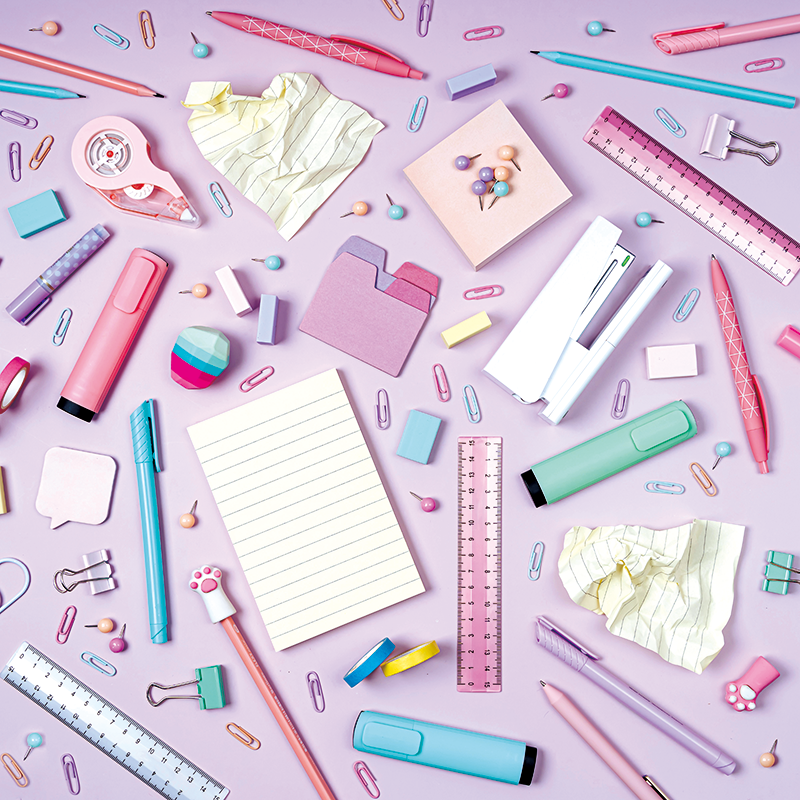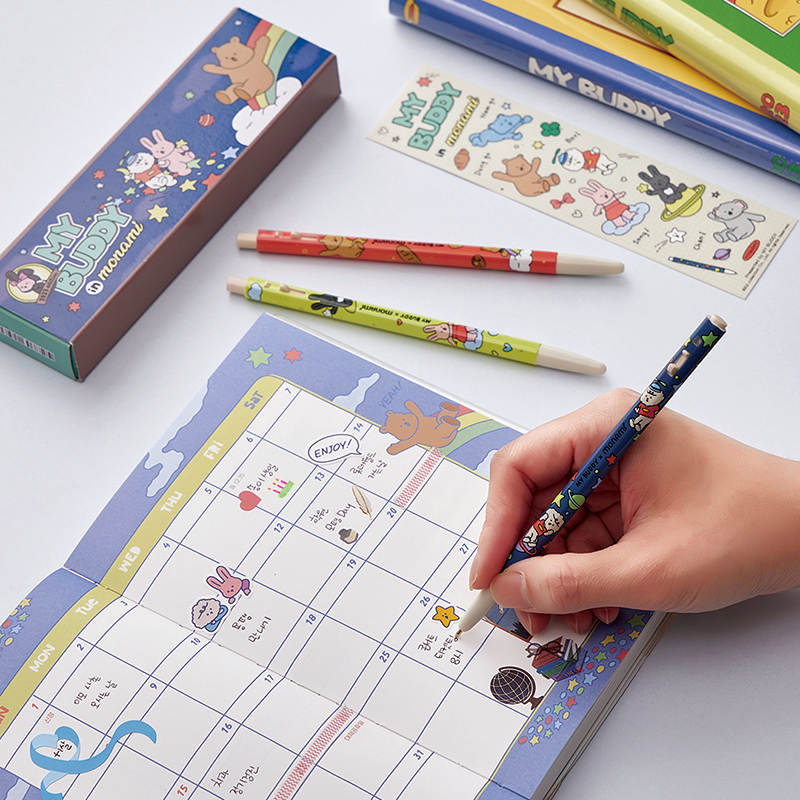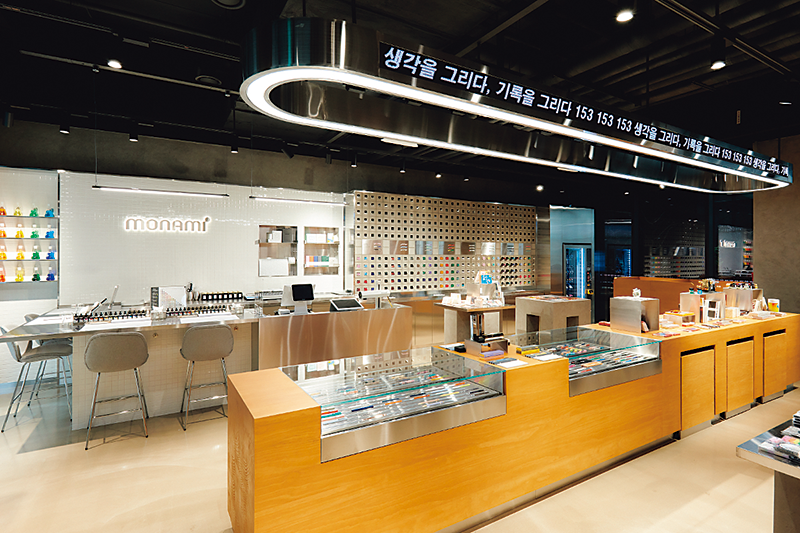In the old days, the brush, ink, paper, and ink stone used in writing or drawing were called the “Four Friends of the Study.” Stationery items that have developed over time are now regarded as tools to express one’s personal taste.

© gettyimagesKOREA
Before the digital age, pens and pencils were indispensable. Like in the rest of the world, daily activities in Korea could not have functioned efficiently without them.
Today, with more than 90 percent of Korea’s population having access to the internet and smartphones, there is no longer a need to reach for pen and paper. A smartphone can be used to jot down notes, compile lists, record voice memos, and take pictures, and with tablet computers you can even sketch with a variety of colors and textures.
As a result, the stationery market is facing headwinds. Amid less use of pens, pencils, and paper, especially by younger people, and a glut of cheap products in discount chain stores, neighborhood stationery stores are dwindling. Still, it would be premature to call writing supplies obsolete since they have found a new niche in the heart of consumers.
Many Koreans still value traditional desk essentials to express themselves and treasure the intimacy conveyed by a handwritten letter. The possible combinations of colors, textures, designs, and composition simply outshine cookie-cutter digital gadgets. In short, pens and paper have become tools to express one’s personal taste.
“DIGGING MOMENTUM”
In recent years, Korea’s retail industry capitalizes on a consumer trend called “digging” that sees consumers delve more deeply than usual into a particular hobby or interest. The practice has become widespread enough to be included in this year’s edition of Trend Korea, an annual publication analyzing consumer trends and providing insights into must-haves and must-dos.
Penhood, Korea’s largest club of fountain pen connoisseurs, is a prime example of the breadth of “digging.” The club has about 46,000 members who love fountain pens and other conventional writing instruments. To satisfy curious shoppers, the club regularly hosts events with scores of booths displaying large collections of fountain pens.
Recognizing the trend, stationery companies are taking a lesson from candle makers who repositioned their products after electric lighting became universal. New uses and features are being added to increase the appeal of stationery.
For “digging” pen enthusiasts, Korea’s leading stationery brand, Monami, has begun issuing commemorative products. Last year, on August 15, the National Liberation Day of Korea, the company released a set of products called “153 ID 8.15” in honor of independence fighters. More recently, it added pens decorated with birth flowers, birth stones, and zodiac signs to its product range. Taking sustainability into consideration, Monami also produces eco-friendly products made with discarded plastic bottles or coconut rinds, or by upcycling and repurposing unused products. Pencil buyers looking for something special can enjoy a wide range of choices, regardless of their preferences in weight, color, feel, and type of wood used, and whether they are right- or left-handed.

Dakku is a portmanteau of Korean words meaning “decorating journals.” It is popular among all age groups because it only requires simple, inexpensive items to express personal tastes and interests.
© Monami

Korea’s leading stationery brand, Monami, has opened an offline outlet, Monami Store Seongsu, named after the Seoul neighborhood that boasts trendy warehouse cafés and boutique shops. Besides shopping for stationary products, visitors can assemble their own pen in an onsite workshop.
© Monami
COVID-19-BORN "DAKKU"
The COVID-19 pandemic has also contributed to redefining stationery products. Forced to stay home, people sought new ways to spend their time.
“Dakku,” a portmanteau of Korean words for decorating journals, became a pastime, especially among young people. It is an activity that does not require specific skills, detailed instructions, or large amounts of money. Colored masking tape, memo pads, and sticky notes are a sufficient starter kit.
For young people, the first smartphone generation, dakku is a retro hobby that their parents may have engaged in as teenagers. Drawing pictures with a pen, writing on a blank notebook page, and attaching sticky notes, patterned masking tape, or scraps of paper into the journal are a good way to spend a few carefree hours. Investing only 500 to 3,000 won (less than US$3) in supplies is enough to give your journal its own personal touch.
HOTSPOTS

Black Heart is a store that reminds customers of the value of pencils before the advent of computers and smartphones. The products on offer include a variety of out-of-production pencils with vintage designs as well as collectible items.
© Lee Seung-yeoun
For now, old-fashioned stationery stores in trendy areas with a lot of foot traffic are in less danger of going out of business, thanks to consumers’ sense of nostalgia. These stores, along with new outlets selling specialized stationery, are found in Seoul’s Seongsu, Hongdae, Jongno, and Itaewon areas.
Monami Stores have become hotspots for young people. The store in Seongsu-dong, which opened last year, reinterprets the neighborhood’s original factory where “Monami 153,” the iconic Korean ballpoint pen, was first produced in 1963. Aside from a wide assortment of stationery products, the store also provides visitors with an opportunity to learn about Monami’s history and products and to assemble their own pen in an on-site workshop, an experience especially appealing to younger customers.
The workshop is equipped for making customized “DIY 153” ballpoint pens and felt-tip “Plus Pens.” In the Ink Lab, visitors cantheir own fountain pen ink by mixing various colors.
At Black Heart, a small pencil store in a back alley of Yeonnam-dong, in western Seoul, customers can enjoy old pencils and the stories behind them, along with other related items, that the store owner has collected over the years. The regular customers include not only young people but also those in their 40s and 50s. Browsing customers often show a keen interest in vintage pencils with old designs whose production has long been discontinued.
Other shops, including Point of View Seoul in Seongsu-dong, Homi Art Shop in Hongdae, and Papier Prost in Jongno, sell creativity tools that appeal to hardcore stationery enthusiasts.
Anyone willing to travel outside of Seoul in search of the history of stationery could start with the Pencil Museum in Donghae, Gangwon Province. Following the example set by the Derwent Pencil Museum in Keswick in the English Lake District, the museum, which looks out over the East Sea, displays some 3,000 pencils from about 100 countries that the owner collected over 30 years. The museum also shows videos on the history of pencils and the process of turning graphite into pencil lead. It seems, then, that it’s too soon to write off pens and pencils.